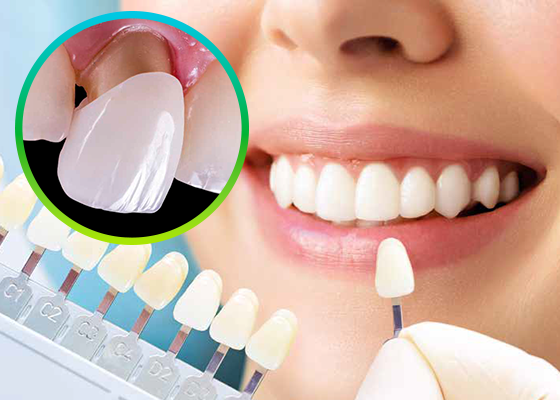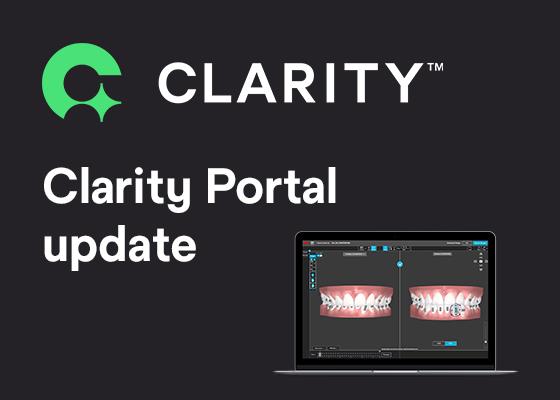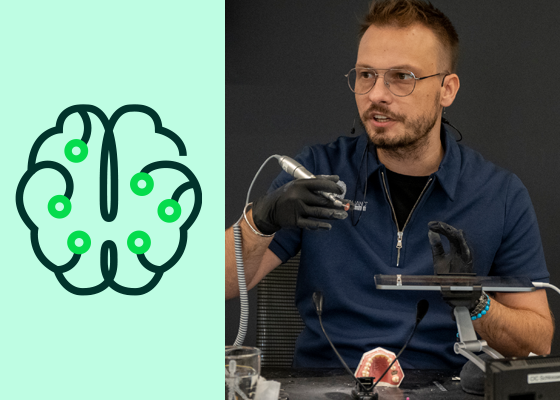What is the name of the patron saint of dentists?
Brain of the Week – History


A look at the issues surrounding health and aesthetics.
Modern life takes its toll on our oral cavity, whether due to diet, lifestyle or illness. As you know, far too many individuals experience oral diseases that impact the health and aesthetics of the teeth. This coincides with society becoming overly-conscious of our image, especially our teeth. To meet this overwhelming demand to correct certain ‘imperfections’, restorative and cosmetic dental modalities have been developed and finessed.
But is there too strong a focus on aesthetics when patients seek restorative and/or cosmetic work? The profession is all-too aware of the impact of social media and misinformation on the internet, and the thought process of ‘if my teeth are white and straight, then they must be healthy’. Helping patients see the importance of health over aesthetics (without foregoing the latter entirely) is an ultimate challenge. But by recognising the significance of good oral health, they can not only appreciate a healthy mouth, but can also prolong and enjoy their dental treatment results for longer.
The link between our smiles and body image is well established: tooth colour/shape has been associated with a person’s attractiveness and social standing. To combat any ‘imperfections’, people have turned to various, sometimes dubious avenues to gain their desired smile. There are many challenges within modern day dentistry, with special mention to outside influences that can have a real impact on patients’ health and wellbeing. ‘Turkey teeth’, a no doubt familiar term within the profession nowadays, still dominate headlines.
Most patients who decide to go overseas for treatment often do so due to price, and with the benefit of a holiday thrown in. Without having done their research, and being motivated by a purely aesthetic viewpoint, they are at risk of complications and, in the worst-case scenario, of receiving long-lasting or permanent damage to their oral cavity. Despite the risk, there are still just as many, if not more success stories about overseas treatment – essentially, it boils down to whether patients have planned for their trip and thoroughly researched clinics in the area. But the allure of cheaper treatment is, for some, still worth the risk.
It must be noted that as a population, we are living longer – the current UK life expectancy is 81.77, up by 0.15 per cent from 2022. Dental work that goes awry, whether due to a badly-researched overseas dental trip to poor oral health compliance, can put patients in an unfavourable position as they age. For dental professionals, this is very worrying. We all want to ‘look good’, but not at the expense of our health. Even some patients who undergo professional treatment may nod along to the routine oral health advice, but once treatment has concluded fail to keep on top of a rigorous oral health routine. As a result, the longevity of their final outcome is reduced considerably. With this in mind, it is important to continue bridging the gap between patient understanding and clinically-supported dental health information. It is not the easiest part of being a dental professional, but improving communication and education is a sure-fire way to help patients make informed decisions that prioritise their health, without compromising their desired aesthetics.
The benefits of good oral health are endless – most importantly, it is a fantastic preventative measure for common dental complications and disease. A patient’s quality of life has been noted to improve drastically, as a result. The advantages of a beautiful smile are likewise extensive, and also include an improved quality of life, albeit in a slightly different, but nonetheless vital way. When patients understand that good oral health and aesthetics complement one another, they are more likely to care for their teeth, and go the extra mile to protect any dental work they have had done. For those undergoing either restorative and/or cosmetic work, many would be surprised to know that following a simple oral hygiene routine could actually help to extend the lifetime of their investment.
When it comes to creating beautiful restorations and helping them last, high-quality products go hand-in-hand with good oral health and patient compliance. For example the RelyX Universal Resin Cement from 3M Oral Care is a dual-cure solution can be used in either adhesive or self-adhesive mode for cementation, for indications such as veneers, all-ceramic, composite or metal inlays/onlays and crowns.
Undergoing dental treatment to improve the smile can transform an individual’s life. By equipping them with the knowledge they need to protect their oral health, supplemented by robust, high quality materials, they (and you) can rest assured that their investment will endure, with reduced risks of oral complications.
We would love to know how we can improve the blog for you. Please answer our survey below. It only takes a few minutes.
You can answer anonymously if you prefer.
References available on request.
This article was frist published in “The Dentist” July 2023

Brain of the Week – History

Discover the latest updates to our software for your digital orthodontic treatments.

SAVE THE DATE!